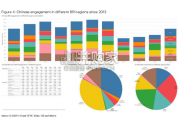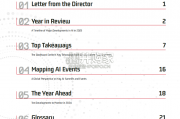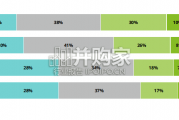China’s financing and investment spread across 61 BRI countries in 2023 (up...
2024-02-27 31 英文报告下载
AI will make the process of finding and hitting targets of military value faster and more efficient. It will also increase accuracy of target identification and minimize collateral damage. Currently, this process generally involves passing data in a serial fashion from a sensor, through a series of humans, to a platform that can shoot at the target. AI will help automate some of the intermediate stages of the decision process. AI will also create opportunities for more advanced processes that would operate more akin to a web, fusing multiple sensors and platforms to manage complex data flows and transmitting actionable information to human operators and machines across all domains.4 In war, many of the military uses of AI will complement, rather than supplant, the role of humans.
AI tools will improve the way service members perceive, understand, decide, adapt, and act in the course of their missions. However, new concepts for military operations will also need to account for the changing ways in which humans will be able to delegate increasingly complex tasks to AI-enabled systems. In the near term, this will be managed through the military’s principle of “mission command,” which stresses decentralized execution and disciplined initiative by subordinates who follow a commander’s intent. This human-centric approach to fighting should remain the standard for the foreseeable future. But as AI continues to advance into the cognitive and neuromorphic domain, and human-machine teaming becomes more sophisticated, the military will need to develop more imaginative concepts and organizational constructs that take full advantage of AI technologies without relinquishing the principles that undergird mission command.

标签: 英文报告下载
相关文章

China’s financing and investment spread across 61 BRI countries in 2023 (up...
2024-02-27 31 英文报告下载

Though the risk of AI leading to catastrophe or human extinction had...
2024-02-26 52 英文报告下载

Focusing on the prospects for 2024, global growth is likely to come i...
2024-02-21 96 英文报告下载

Economic activity declined slightly on average, employment was roughly flat...
2024-02-07 67 英文报告下载

Economic growth can be defned as an increase in the quantity or quali...
2024-02-06 82 英文报告下载

In this initial quarterly survey, 41% of leaders reported their organizatio...
2024-02-05 66 英文报告下载
最新留言